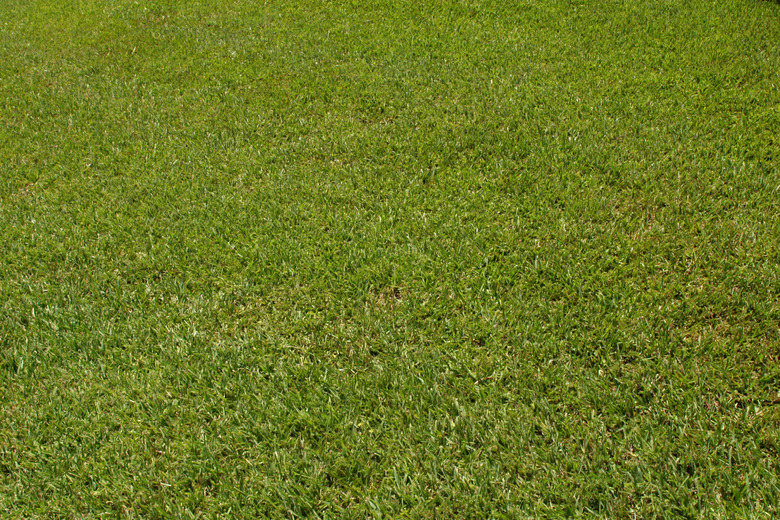When To Dethatch Bermuda
Bermuda grass (Cynodon spp.), used as a turf grass in U.S. Department of Agriculture plant hardiness zones 7 through 11, grows vigorously and tolerates heat, salt and heavy traffic. Proper lawn maintenance that includes regular dethatching is often needed to maintain lawn vigor and appearance. A thin thatch layer is beneficial, conserving soil moisture and suppressing weeds, but a thick thatch layer can block air and water movement, leave the turf prone to scalping and harbor pests and diseases.
Measuring the Thatch Layer
Step 1
If the lawn has a spongy or bouncy feel underfoot, appears drought-stressed even when rainfall or watering is adequate and has scalped areas or problems with fungi or pests, a thick thatch layer could be responsible. The most reliable way to determine if a Bermuda grass lawn requires dethatching is to simply measure the thickness of the thatch layer. Dig up a small wedge of soil and grass with a small spade to inspect it. The thatch appears as a brown layer of living and dead stems and other plant debris between the soil surface and the bottom of the green grass blades. A thatch layer is considered excessive when it is more than 1/2 inch thick. If it's this thick, it's time to dethatch.
- Bermuda grass (Cynodon spp.
- ), A thin thatch layer is beneficial, conserving soil moisture and suppressing weeds, but a thick thatch layer can block air and water movement, leave the turf prone to scalping and harbor pests and diseases.
Timing
Step 1
Dethatch when the Bermuda grass is actively growing and you anticipate there are at least 45 days of favorable weather left in the growing season. Plan to perform the dethatching in mid to late spring or early fall. Avoid dethatching in summer or when temperatures are above 90 degrees Fahrenheit. Also avoid dethatching when extended dry spells are expected.
Maintenance Dethatching
Step 1
You can dethatch as part of your annual lawn maintenance regimen. Before dethatching, mow the Bermuda grass slightly lower than usual and lightly water the lawn. Following dethatching, rake up and dispose of the debris. If the lawn will also be aerated, the aeration should follow dethatching and the cores pulled up during the process should be left on the lawn surface as topdressing.
- Dethatch when the Bermuda grass is actively growing and you anticipate there are at least 45 days of favorable weather left in the growing season.
- Before dethatching, mow the Bermuda grass slightly lower than usual and lightly water the lawn.
Slowing Thatch Accumulation
Step 1
Properly caring for a Bermuda grass lawn and performing routine maintenance correctly can help to slow thatch accumulation. Excessive or fast-release nitrogen fertilizer applications can lead to a flush of growth that will contribute to thatch buildup. Mowing the Bermuda grass at the recommended height of 1 to 1 1/2 inches and frequently enough that no more than one-third of the grass blade height is removed with a single session will slow debris accumulation. Good watering practices are also important. Deep, infrequent watering is better than shallow, light watering. Pesticides applied to turf can encourage thatch accumulation by affecting beneficial microorganisms and earthworms. Occasionally topdressing the lawn area with 1/8- to 1/4-inch layer of compost or high-quality topsoil can help to break down the thatch layer by introducing microbes that will decompose the thatch.
- Properly caring for a Bermuda grass lawn and performing routine maintenance correctly can help to slow thatch accumulation.
- Occasionally topdressing the lawn area with 1/8- to 1/4-inch layer of compost or high-quality topsoil can help to break down the thatch layer by introducing microbes that will decompose the thatch.
References
- Texas A&M AgriLife Extension Service: Bermudagrass
- United States Department of Agriculture: USDA Plant Hardiness Zone Map
- University of California Statewide Integrated Pest Management Program: When to Dethatch
- Arizona Master Gardener Manual: Turfgrass Dethatching
- Clemson Cooperative Extension: Controlling Thatch in Lawns
- University of California Statewide Integrated Pest Management Program: Dethatching
